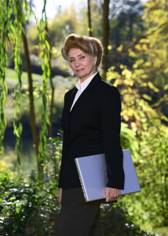CWorst-Ever Drought Will Not Make California another Somalia, Predicts Water Advocate
Press release
Worst-Ever Drought Will Not Make California another Somalia, Predicts Water Advocate
Both Can Still Be Rescued Reports Sharon Kleyne Hour Power of Water Host but Requires Research, Education and Strong Action
Hear the Sharon Kleyne Hour Power of Water on World Talk Radio, Voice America, Green Talk Network and Apple iTunesp
As the worst and longest drought in California history deepens, residents may wonder, is California destined to become another Somalia or Kenya, East African nations where drought has destroyed much of the economic base and killed thousands of people through dehydration and famine. According to water advocate Sharon Kleyne, host of the Sharon Kleyne Hour Power of Water radio show, despite recent dire warnings to the contrary*, this probably won't happen. It isn't too late to rescue either California or East Africa, says Kleyne.

*("Think California drought is bad? Scientists issue dire warnings of US megadrought that could last 35 years and lead to mass population migrations," London Daily Mail, September 3, 2014 http://www.dailymail.co.uk/sciencetech/article-2736281/California-drought-preview-warn-scientists-Fears-megadrought-35-YEARS-lead-mass-population-migrations-way-southernwest-US.html)
Avoiding disaster in California, says Kleyne, will require research, public education and action much stronger and better coordinated than drought relief efforts to date.
Kleyne will report on what she believes is required to survive the drought in both California and East Africa during the introductory segment of her radio show of September 7, 2014 (http://www.voiceamerica.com/show/2207/the-sharon-kleyne-hour), .
The syndicated Sharon Kleyne Hour Power of Water radio show, heard on VoiceAmerica and Apple iTunes, is sponsored by Bio-Logic Aqua Research, a global research and technology center specializing in and fresh water, the atmosphere and dehydration. Nature's Tears® EyeMist® is the Center's signature product for dry eyes. Kleyne is Bio-Logic Aqua's Founder and Research Director. .
California's experience teaches powerful lessons, according to Kleyne. For decades, federal, state and regional governments had invested billions in reservoirs and aqueducts to collect and move fresh water from the water rich mountains to urban and agricultural areas. Many reservoirs are nearly empty and the aqueducts have little water to transport. Farmers have been irrigating crops by pumping (and depleting) ground water that takes thousands of years accumulate. .
In East Africa, says Kleyne, they lack the extensive infrastructure of reservoirs, aqueducts and wells. Life in many areas still depends on women carrying jugs of water on their heads for many miles each day. In the current drought, humans and cattle die in large numbers from dehydration and from diseases related to unsanitary water.
Is California heading in the same direction as East Africa? Not yet, says Kleyne, but it could. Extended drought, Kleyne explains, can kill the microbial content that makes soil fertile and enables it to retain water. If the drought is long and severe enough, according to Kleyne, the dehydrated soil could become unproductive desert sand.
Right now, Kleyne notes, California has infrastructure and money. Like Saudi Arabia, California may eventually be forced to import nearly all their water. After money and water run out, people would start to leave in large numbers, moving back to non-arid regions like the Northeast and Upper Midwest.
Worldwide, 2 billion of Earth's 7 billion inhabitants live in semi-arid regions threatened by desertification. The most at-risk areas, according to Kleyne, are: Central Africa between the Sahara, Kalahari and Somali Deserts. Vast areas of Central Asia including much of the former Soviet Union. Areas of the Middle East not already desert, including parts of Turkey, Jordan, Iraq and Iran. Central China adjacent to the Gobi Desert. And large areas of the United States including the Great Plains, intermountain areas north of the Great Basin, and most of Southern California, Arizona and Nevada. Much of this is human caused. .
Kleyne contends that there is sufficient fresh, sanitary water to go around, even with the globe's many drought areas. Although only 3 percent Earth's water is fresh, and only 1 percent of that is safe and drinkable, water covers 70% of the planet's surface. Kleyne notes that as with human dehydration, the longer and more sever the dehydrating drought, the worse is the damage and the more complex is the recovery. But it can be done.
What is needed, Kleyne believes, is willingness to spend money on research and technology to determine the damage already done and discover technologies and conservation practices to fix it. For example, in North Dakota, using dry land farming methods, crops are grown with one-sixth the normal amount of water.
The challenge to California and Kenya, says Kleyne, is to educate the public now, to make them aware of the situation before it's too late. Armed with knowledge, they can prevail upon their leaders to quit fighting over water and work together to solve the problem for everyone. It can be done, Kleyne concludes, because it must be done.
Health + Diet
Environment
|
|
 Sharon Kleyne
Sharon Kleyne